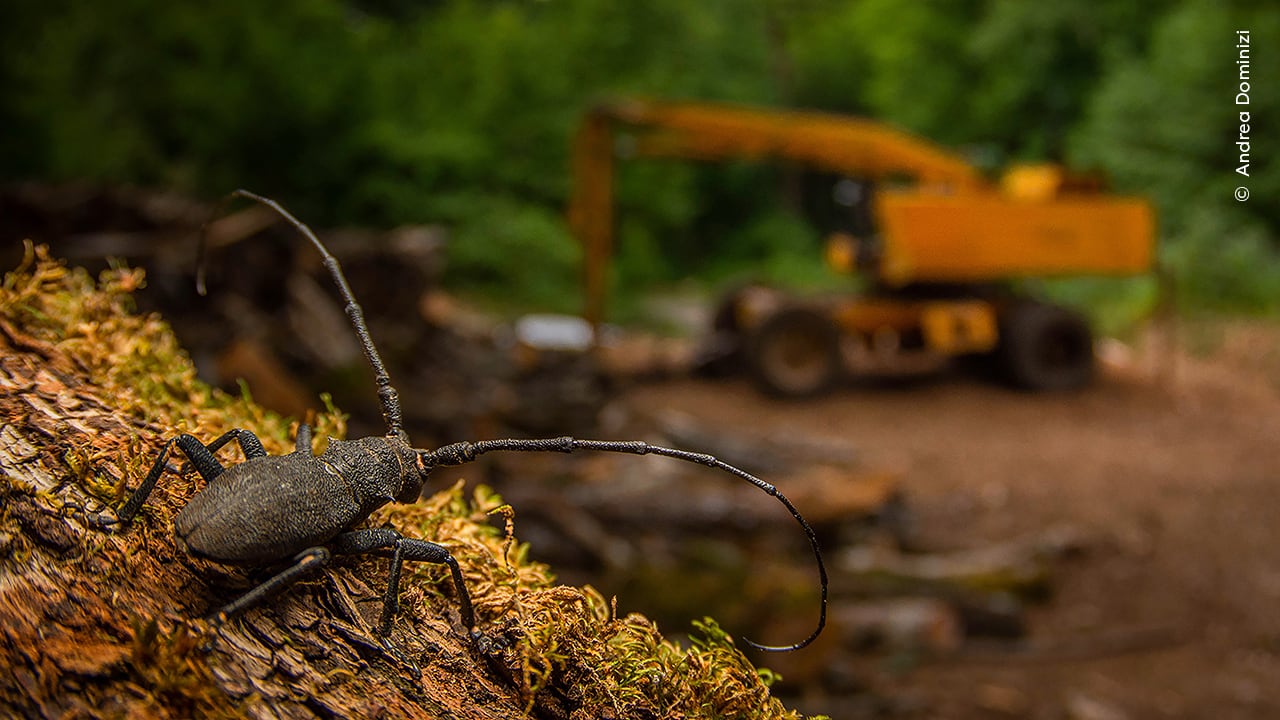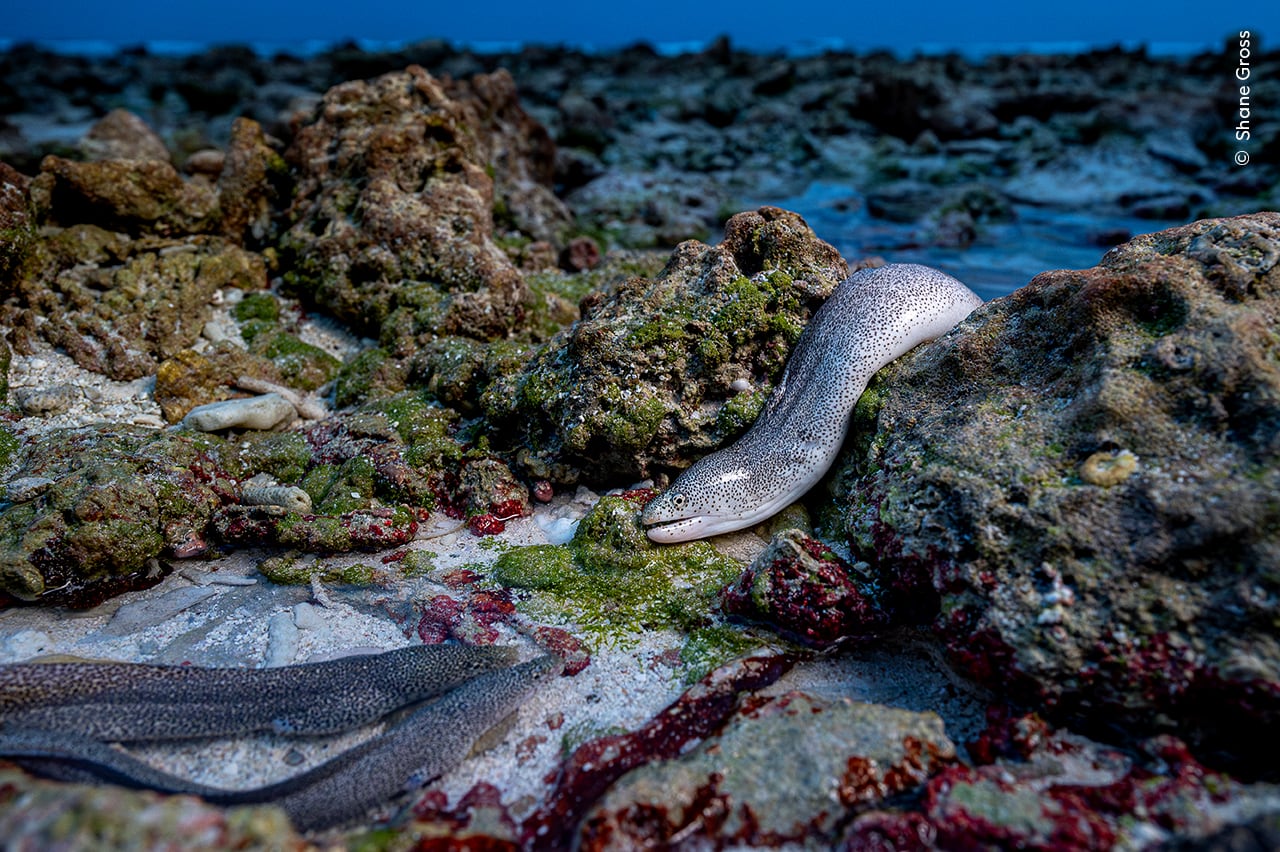A hyena prowling an deserted mining city and a beetle perched to witness the destruction of its forest habitat are the winners of this 12 months’s Wildlife Photographer of the Yr competitors.
The 2 grand prize winners and the winners of the 19 classes have been introduced on Wednesday by the Pure Historical past Museum in London, which has organized the competitors for 61 years.
South African wildlife photographer Wim van den Heever received the Wildlife Photographer of the Yr title with Ghost City Customera nighttime photograph of a brown hyena among the many ruins of an deserted diamond mining city in Kolmanskop, Namibia. The species passes via there on its method to the coast of the Namib Desert to hunt Cape seal pups.
Van den Heever noticed the tracks of the world’s rarest hyena in Kolmanskop a decade in the past and dreamed of capturing this scene. He spoke to an area safety guard, who mentioned the animals confirmed up each 4 to 6 weeks. “Each time I visited the ghost city, I arrange digicam traps in hopes of success,” he recalled within the photograph description. “It took me 10 years to lastly get this single picture of a brown hyena in probably the most excellent body conceivable. I used to be ecstatic.”

Andrea Dominizi from Italy received Younger Wildlife Photographer of the Yr with “After the Destruction”. It is a close-up of a longhorn beetle on a moss-covered log, wanting up at an deserted machine from a logging operation within the Lepini Mountains of central Italy.
Nanaimo, BC photographer Shane Gross, who received the competitors’s large title final 12 monthswas the one winner of the Canadian class in 2025, capturing “Animals of their surroundings”, along with his photograph Like an eel out of water.
Gross mentioned he took the photograph whereas working for the nonprofit Save Our Seas Basis on D’Arros Island in Africa’s Seychelles archipelago. The island was not too long ago established as a “no-go” marine protected space, the place fishing and even shell amassing isn’t permitted.
The purpose was to doc adjustments earlier than and after safety, the influence of restoration to exchange coconut plantations with native vegetation, and the work of scientists to watch the adjustments.
Though the world is wealthy in wildlife, reminiscent of sharks, manta rays, nesting sea turtles, seabirds and even big tortoises which might be being reintroduced, Gross acknowledged that these animals have been extensively photographed.
So when he arrived, he requested the scientists to point out him one thing distinctive. They identified speckled moray eels gliding alongside the shore looking for useless fish that had washed up at low tide.
“I assumed, ‘Wow, that is one thing I’ve by no means seen earlier than,’” he recalled, and commenced capturing the tiny eels, that are not more than two fingers thick. The animals ended up turning into extraordinarily shy and it took him nearly your entire expedition to get the photograph he needed.

Gross mentioned the eels usually encountered fish bigger than themselves and, with out arms, had issue tearing off items. Some would group collectively or depend on one another to realize a bonus. He was impressed by the fish’s outstanding skill to see and odor their prey each above and beneath the water.
He hopes the photograph will permit viewers to admire an animal that “isn’t on most individuals’s radar.”
Many marine protected areas permit fishing, he mentioned, and are sometimes established to guard particular species, reminiscent of sharks or sea turtles. He thinks this isn’t sufficient: “Species want an ecosystem to reside.” Whereas on D’Arros Island, he noticed the interdependence and connection of the species that lived there; for instance, seabirds that hunt fish within the sea after which convey these vitamins to land, fertilizing crops with their guano.
A marine protected space takes this into consideration and “protects the whole lot, high to backside,” he mentioned, together with animals we don’t take into consideration, like eels.
The successful photographs are amongst 100 chosen from greater than 60,000 entries that might be featured in an exhibition opening at London’s Pure Historical past Museum this Friday.
Canadians can see them in particular person on the Royal Ontario Museum in Toronto from November 8, 2025 to March 29, 2026.

Leave a Reply